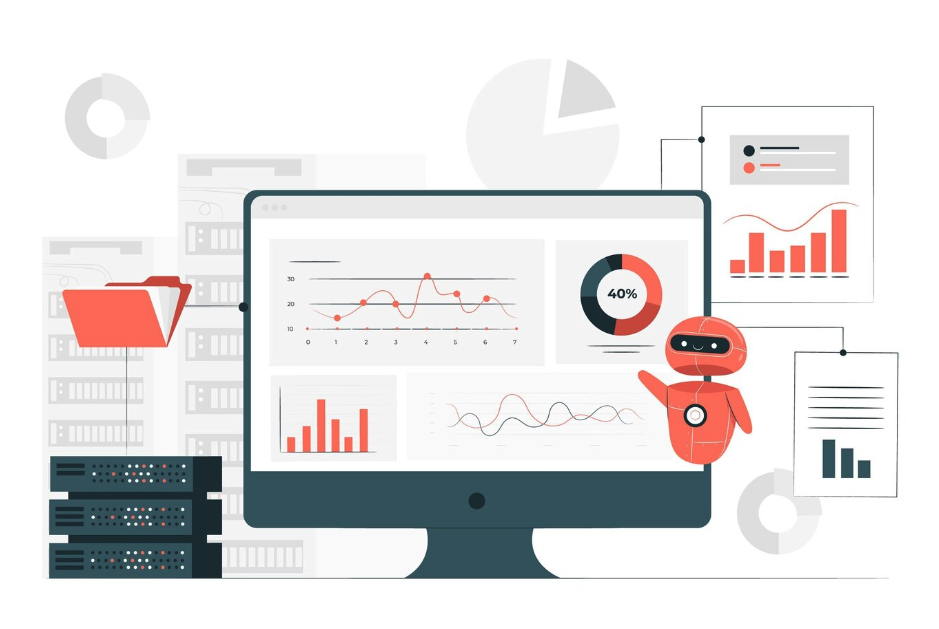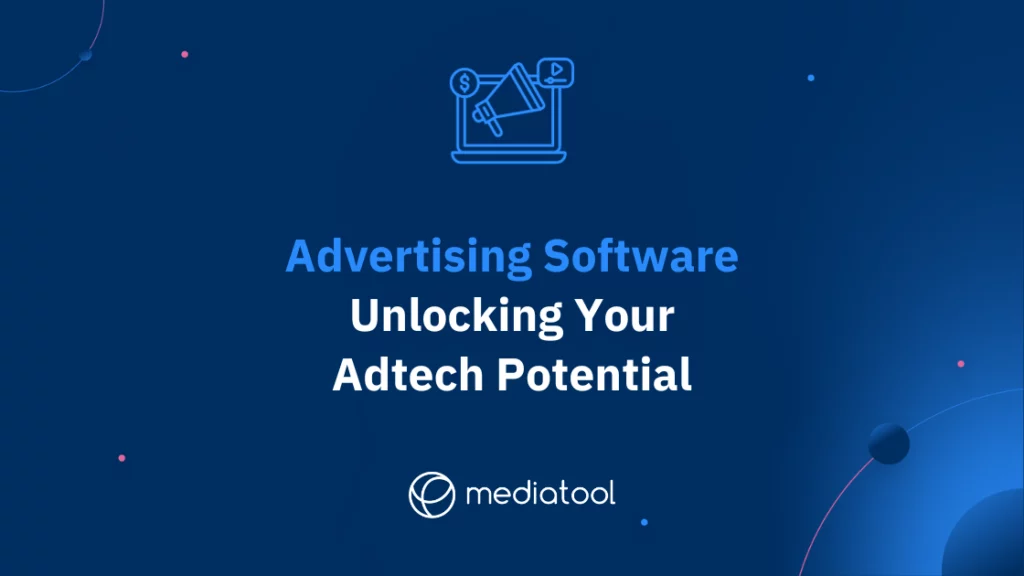Advertising software is a broad category spanning from campaign operations to client relations, used to manage a flurry of deadlines and creative demands.
In an industry where the pace is relentless, and the pressure to deliver on creativity and performance is high, these tools have become indispensable.
They not only orchestrate the flow of tasks and projects but also bring a level of precision to targeting, optimizing, and reporting on ad campaigns that were previously unattainable.
By automating the legwork, they free up creative minds to do what they do best — craft compelling narratives and devise strategies that resonate with audiences.
As the digital landscape becomes more intricate, relying on such sophisticated systems is not just a convenience; it’s a strategic imperative for staying ahead in the competitive advertising world.

What Is Advertising Software?
Advertising software encompasses a wide array of tools, each designed to address different stages and aspects of the advertising process. These solutions range from the initial stages of creative asset design to planning, activation, monitoring, and reporting. Rather than being a singular platform, advertising software represents a diverse ecosystem of specialized applications tailored to the unique needs of the advertising and marketing industries.
These tools are developed to handle various facets of advertising. For instance, some software focuses on creative design and asset management, enabling creative agencies to build and organize their advertising content effectively. Some are used as a resource scheduling tool while others specialize in planning and strategy, offering features like market research, media planning, and audience segmentation.
Overall, the advertising software market offers both integrated solutions that combine several of these functions and specialized tools that focus on specific tasks. This variety allows agencies and businesses to tailor their software stack according to their specific workflow needs, campaign objectives, and the intricacies of their target market.
Why Is Advertising Software Important?
Boosting Productivity and Collaboration
Advertising software is a linchpin in the marketing sector, where time and creativity are invaluable assets. It streamlines the management of resources and campaigns, driving a significant increase in productivity as evidenced by over 90% of professionals in a recent survey.
Additionally, 85% of these respondents attribute improved team collaboration to these automation solutions. This highlights how advertising software not only boosts productivity but also fosters a collaborative work environment, freeing up creative minds to focus on innovation and strategy.
Data-Driven Marketing and SEO
A key advantage of using advertising software is the access it provides to up-to-date data and analytics.
This feature is essential for marketing teams to maintain a competitive edge in areas like search engine optimization (SEO) and Google Ads. The software’s analytics tools offer valuable insights for shaping effective digital marketing campaigns.
Integrating Sales and Marketing for Increased Revenue

The integration of sales and marketing within a unified system is another significant benefit of advertising software. This integration leads to more cohesive strategies and better conversion rates.
Businesses that have successfully merged their Sales and Marketing departments have seen over a 200% increase in revenue from marketing, underscoring the software’s impact on financial growth.
Enhancing Customer Relationship Management (CRM)
The incorporation of easy-to-use CRM tools in advertising software plays an important role in tracking the customer journey. It ensures that client projects are handled with a personal approach, which not only strengthens client relationships but also boosts client satisfaction and business profitability.
Nearly half of all firms report that leveraging CRM systems has amplified their sales earnings, highlighting the critical role such systems play in the amplification of a company’s financial performance.
Comprehensive Campaign Management
Advertising software simplifies the complexities involved in campaign management.
From handling request forms to managing time tracking and resource scheduling, and implementing automated workflows, this software ensures that businesses can operate within budget while meeting the rigorous demands of the advertising industry.
Far from being just a tool, it is a strategic asset integral to the success of modern marketing agencies.
Key Features of Advertising Software
Dive into the core components of advertising software, and you’ll find a suite designed to streamline complex tasks.
1. Campaign Management Tools
The foundation of advertising software lies in its campaign management capabilities. These tools simplify the complexities involved in launching and tracking ad campaigns.
With features designed for ease of use, managing various aspects of a campaign, from targeting to budgeting, becomes a streamlined process.
2. Project Management and Resource Allocation
Another key feature is its project management functionality. This aspect of the software empowers teams to effectively plan, execute, and monitor projects. It includes resource allocation tools that help in managing team workload, ensuring that projects adhere to set timelines and objectives.
3. Automated Workflows and Billing
Efficiency in advertising operations is significantly enhanced by automated workflows. This feature minimizes repetitive tasks, allowing teams to focus on more strategic activities.
Additionally, detailed billing functionality within the software ensures accurate and timely invoicing, a key aspect of agency operations.
4. Time Tracking and Performance Metrics
Time tracking capabilities are integral to project management, providing insights into the time spent on various tasks and projects.
Coupled with performance metrics, advertising software offers a comprehensive view of both operational efficiency and campaign effectiveness.
This integration allows marketing teams to make data-driven decisions, optimizing strategies for better outcomes.
How Advertising Software Enhances Collaboration and Creativity
1. Enhancing Digital Collaboration
In the advertising sector, the ability to collaborate effectively is paramount. Advertising software caters to this need by providing tools for seamless file sharing, real-time task updates, and consistent communication.
This is particularly relevant in today’s landscape, where about 75% of creative collaboration occurs digitally. Such features ensure that team members can work together efficiently, regardless of their location.
2. Centralized Information Hub
Advertising software serves as a central repository for all project-related data. It ensures that every team member, whether working remotely or on-site, has access to the latest information and campaign updates. This centralized data storage is key to keeping teams aligned and informed, fostering a cohesive work environment.
3. Streamlining Creative Processes
By reducing the time spent on administrative tasks, advertising software allows teams to allocate more resources to their creative endeavors. This streamlining of processes not only enhances productivity but also supports the creative process.
It bridges the gap between remote and physical workspaces, making it easier for ideas to flow and creativity to thrive.
Advertising Software and Data-Driven Decision Making
For project managers at advertising firms, informed decision-making is a non-negotiable part of the job. By leveraging the data aggregation and reporting functionality of advertising software, they can easily manage multiple projects and automate workflows, ensuring that resources are optimally allocated. This transition to a data-driven approach allows teams to focus on creativity while the software handles the granular performance metrics.
A complete set of analytics features within ad software aids marketing teams in staying up-to-date with the performance of various ad campaigns. The ability to generate custom reports means that data becomes a storytelling tool, painting a clear picture of where the advertising spend is generating results and where adjustments are needed. These insights not only guide current project management but also inform the planning of future campaigns.
The Impact of Advertising Software on Client Management and Satisfaction

Effective client management is important for the success of any marketer. Advertising software provides a structured platform for managing client information, project deliverables, and communications. This ensures that clients are kept informed and engaged throughout the campaign process.
Generating timely, accurate reports and analytics also plays a significant role in demonstrating campaign performance and advertising spend to clients, fostering trust and satisfaction.
Types of Advertising Software
Advertising software encompasses a broad range of tools designed to cater to various aspects of the advertising process. Each type of software serves a unique purpose, tailored to specific needs within the advertising and marketing domains. Understanding the different types of advertising software and their applications can help businesses and agencies select the right tools to enhance their advertising efforts.
Media Management Platforms
- Example: Mediatool
- Use: Media management platforms allow you to plan, track and report on all of your marketing data. Perfect for global media management teams, you’re able to view global campaigns all from a centralized location, while also having the ability to dig deeper and view granular data on all your campaigns from a local level. Media management tools are becoming more important in the race to structure data and make it AI-ready.
Pay-Per-Click (PPC) Advertising Platforms
- Example: Google Ads, Bing Ads
- Use: These platforms are used for managing PPC campaigns on search engines. They enable advertisers to create ads, set budgets, and target specific keywords, paying only when a user clicks on their ad. They are essential for driving targeted traffic to websites and are widely used for immediate lead generation.
Social Media Advertising Tools
- Example: Facebook Ads Manager, LinkedIn Ads
- Use: These tools are designed for creating and managing advertising campaigns on social media platforms. They offer detailed targeting based on user demographics, interests, and behaviors, making them ideal for building brand awareness and engagement.
Programmatic Advertising Platforms
- Example: The Trade Desk, AdRoll
- Use: Programmatic advertising involves automated buying and selling of online ad space. These platforms use algorithms and data to serve ads to the right audience at the optimal time and place. They are used for efficient, large-scale ad campaigns across various online channels.
Native Advertising and Content Distribution Networks
- Example: Taboola, Outbrain
- Use: These platforms specialize in distributing native ads, which are designed to blend seamlessly with the content on the website they appear. They are effective for promoting content in a less intrusive way and are often used for brand storytelling and content marketing.
Display and Video Advertising Platforms
- Example: Google Display Network, Criteo
- Use: These platforms provide tools for creating and launching display and video ads across a network of websites. They are used for visual advertising campaigns aimed at enhancing brand visibility and user engagement.
Email Marketing and Automation Software
- Example: Mailchimp, HubSpot
- Use: Email marketing software is used for designing, sending, and tracking email campaigns. These tools often include automation capabilities, allowing for personalized and timed email sequences, necessary for lead nurturing and customer retention strategies.
Influencer Marketing Platforms
- Example: AspireIQ, Upfluence
- Use: These platforms connect brands with influencers for marketing collaborations. They are used for influencer discovery, campaign management, and performance tracking, essential for leveraging social influence in advertising campaigns.
Affiliate Marketing Platforms
- Example: ShareASale, Commission Junction
- Use: Affiliate marketing platforms facilitate partnerships between advertisers and affiliates (publishers or influencers) who promote products or services. They are used for managing affiliate networks, tracking sales or leads generated, and handling commissions.
Outdoor and Digital Out-of-Home (DOOH) Advertising Software
- Example: Broadsign, Vistar Media
- Use: This type of software is used for managing and delivering advertising content on digital billboards and outdoor screens. It’s useful for large-scale, location-based advertising, integrating digital technology with traditional outdoor advertising.
Cross-Channel and Omnichannel Advertising Platforms
- Example: Adobe Advertising Cloud, Sizmek
- Use: These comprehensive platforms allow for the management of advertising campaigns across multiple channels, including online, mobile, social, and traditional media. They are used for creating a consistent advertising experience across different customer touchpoints.
Each type of advertising software offers distinct features and capabilities, addressing the diverse needs of today’s advertising landscape. By selecting the right combination of tools, businesses and agencies can effectively manage and optimize their advertising campaigns across various channels and platforms.
Choosing the Right Advertising Software for Your Business
Selecting the appropriate advertising software requires a clear understanding of your business requirements.
Consider the scale of your operations – do you handle a high volume of small projects or a smaller number of large campaigns? Are you looking for software that offers a comprehensive set of tools or just the essentials?
Examine the software’s scalability, support options, and whether it provides a unified platform for all your advertising needs. It’s important to choose software that aligns with your business objectives, supports your team’s workflow, and can adapt to your growth over time.
Conclusion: The Game-Changing Advantages of Advertising Software
When it comes to advertising – efficiency, innovation, and agility are paramount. Advertising software emerges as the game-changer, equipping teams with the tools needed to navigate the competitive landscape successfully. It’s not just about managing ad campaigns or tracking the time spent on creative assets—it’s about fostering a synergistic environment where teams, project managers, and account managers can flourish.
With many features ranging from task management and automated workflows to Gantt charts and resource scheduling tools, advertising agency software is instrumental in delivering projects that meet and exceed client expectations.
By providing a single platform for all facets of campaign management, it simplifies the complex, enabling businesses of all sizes, from small advertising agencies to large enterprises, to stay on top of their game.
Integrating client management and easy-to-use CRM systems into the same system ensures a seamless flow from sales to project delivery, underscoring the importance of maintaining up-to-date client relationships and data-driven decision-making.
As marketing agencies evolve, using dedicated onboarding, real-time analytics, and the capacity to generate custom reports becomes advantageous and essential. These tools empower businesses to manage their advertising spend wisely, optimize their marketing efforts, and scale their operations effectively.
Choosing the right advertising software is a strategic decision that can significantly impact the trajectory of growth. It requires careful consideration of key features, functionality, and the ability to adapt to evolving needs. But once in place, it serves as the cornerstone of a modern, responsive, and ultimately successful advertising business.
Start making smarter investment decisions by taking control of your media data with Mediatool. Begin to structure your media data and make it AI-ready. Want to learn more? Book a tour!





